Captivated by our previous article on Sikh Soldier’s in Tibet – Year 1904, we asked Amardeep Singh to share his knowledge and experiences.
 Picture of Lake Manasarovar with Mount Kailash in the left background
Picture of Lake Manasarovar with Mount Kailash in the left background
• What inspired you to make your journey to Tibet?
I am a born wanderer. Wanderers don’t need inspirations. They are like white clouds floating freely in the sky, unknowingly abandoning themselves in search for the unknown, which eventually leads them to an aim that has always been present but hidden deep inside them. Tibet was one small outcome of my larger wandering footprint. Our elder daughter had completed schooling in mid 2012 and was on her way to college, which would take her far away from us in Singapore to Vancouver, and the journey to Tibet also served as a father-daughter bonding time.
• Were the Tibetan people welcoming and helpful in your travels?
Treat others as you would expect to be treated. This simple approach will ensure a warm welcome in any place. As we expose ourselves to diverse cultures and inculcate respect for all, not seeing ourselves to be any superior to others, then one’s own diversity can serve as a great anchor, building bridges to cross the world with ease. When you point a finger at others, four on your hand point back to you. So during one’s travels, before forming an opinion about the people in a country, it is always better to reflect on oneself and ask how you should approach them. Be sensitive to their customs and culture. Be open to sharing yours with them. Tibetans are no exception these basic human traits.
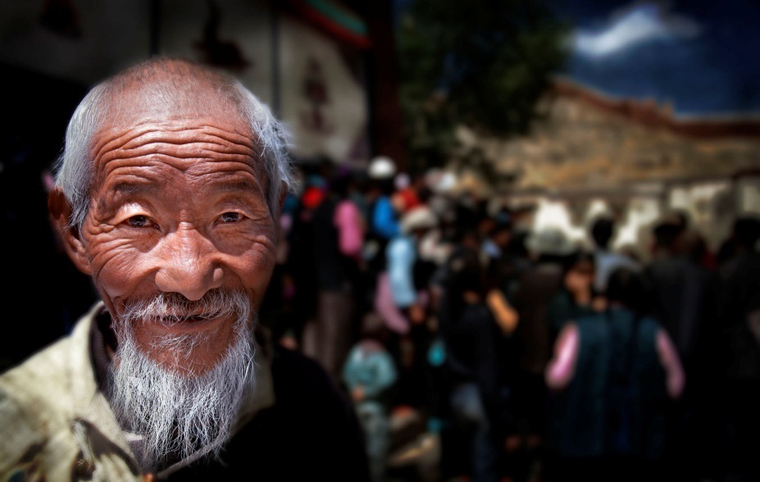 A Tibetan man
A Tibetan man
• Was language a barrier in communicating with the Tibetan people?
I see the world through frames and over time have learnt the language of pictures, which has taught me to communicate without the need to open one’s mouth. A photographer needs to learn how to communicate with the environment, without having to learn the language.
My photography adventures take me to very remote parts of the world, where even infrastructure may not exist. In situations like these, I focus my mind on the sole objective to create powerful pictures and therefore I reduce my needs to that of mere existence.
So the only language I need to know is that which gets me food.
Tibet however is unique as the Chinese government has imposed a lot of travel restrictions. To enter Tibet, apart from the China Visa, one needs a Tibet autonomous region permit. The permit will allow access only to the places that were applied for and therefore no last minute travel changes can be incorporated. To travel outside of Lhasa, foreigners need to hire a driver and a guide from a designated agency.
I do not look for luxuries in my travels. Photography requires the flexibility to chase the light and therefore the mindset needs to be highly adaptive. In remote western areas of Tibet, I stayed with local families in the villages. That’s the best way to experience any new place.
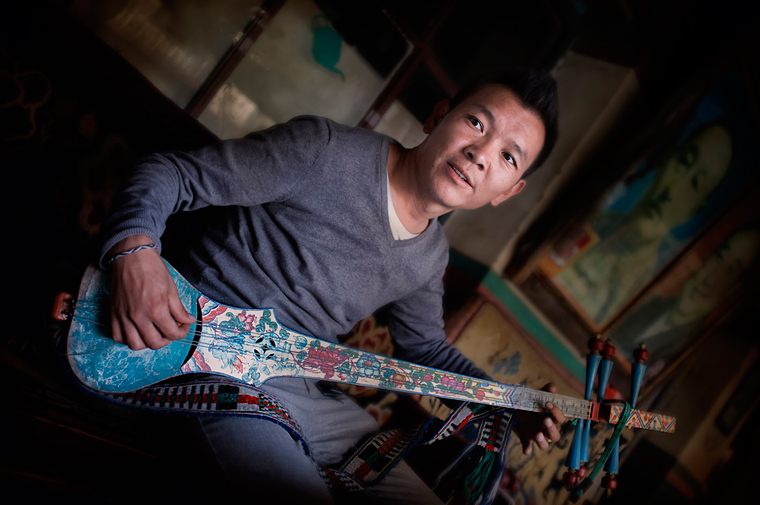 Picture of Sonam, the Tibetan who accompanied us in our journey
Picture of Sonam, the Tibetan who accompanied us in our journey
• Do you have any suggestions for anyone wanting to plan such a trip to Tibet?
I need to qualify this question by saying that if the reference is to plan a trip similar to mine, then you need to be prepared for a rough ride. I drove 3,400 km from Lhasa to ancient Guge kingdom, which is very close to the India border of Spiti valley in Himachal Pradesh. These are remote areas where food and quality of accommodation is bare minimal. If that’s the reference then you need to prepare yourself well for the adventures associated with any long and hard journey.
On the other hand, if one is referring to a typical tourist circuit, then getting to Lhasa and experiencing a few surrounding areas, in a day’s drive, is what could be achieved from the lap of luxury.
My advice is to be first clear in your mind, what you plan to achieve from a travel like this to a remote part of the world.
Additionally, it is very important to be aware that Tibet is called the roof of the world, surely for a reason. You are going to be on a plateau at a very high altitude. Getting into Lhasa, the capital city of Tibet, from the lower altitudes requires a rapid ascend through modern means of transport. The body will call out for acclimatization. Head will pound and blood pressure will start rising. This should not be taken lightly and it is advised to keep a minimum of two days in Lhasa, just lying down on your bed. One should neither be ambitious to walk in the first two days. Once the body has adjusted, the plateau of Tibet will make you feel as you are in any other flat land. High Altitude Mountains in Tibet appear to be very small as you are yourself at a relatively high flat land.
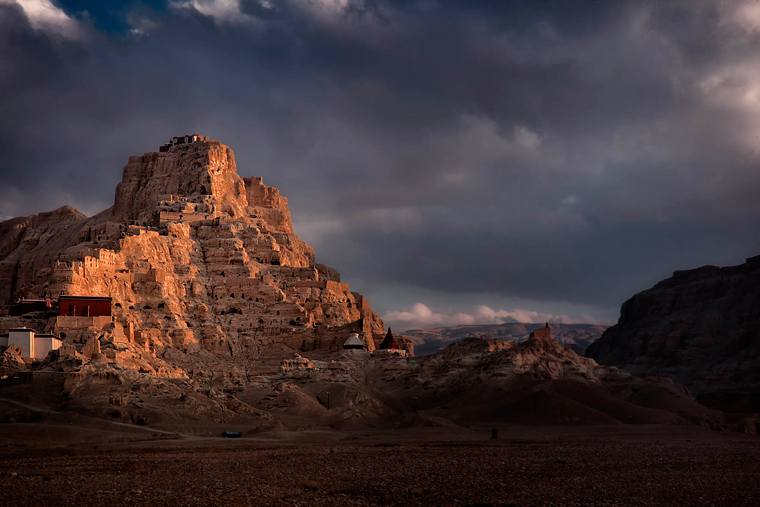 In the remote western area of Tibet, at the ancient Guge kingdom, I was at homestay.
In the remote western area of Tibet, at the ancient Guge kingdom, I was at homestay.
• Your passion for photography and history is awesome. Your photography is breathtaking. Certainly there is much more to a picture than what meets the eye. Your phrase "I try to see the world beyond seeing!" Would you please elaborate on this and explain the realm of "seeing" you refer to?
Passions are not born. They are a rare commodity. Anything rare has to be found with an effort. What may seem to be awesome now has been achieved by years of burning the midnight oil. A small step at a time, with persistence over the years, has created what I am today.
It is through ages of being hidden deep inside the earth, enduring pressure from all direction that coal finally transforms to a diamond. Certainly there is more to a diamond than what meets the eye.
To be able to see anything, firstly there has to be a conviction that it does exist. It is only then can we channel our effort to see it. Even by seeing, we may still not be able to see it because it may require a transformation of our self to see the subtleness around it.
Our individuality is connected to our environment and every action we make, is bound to result in a response from the environment. It is this element that I refer to as having the ability to “see beyond seeing”.
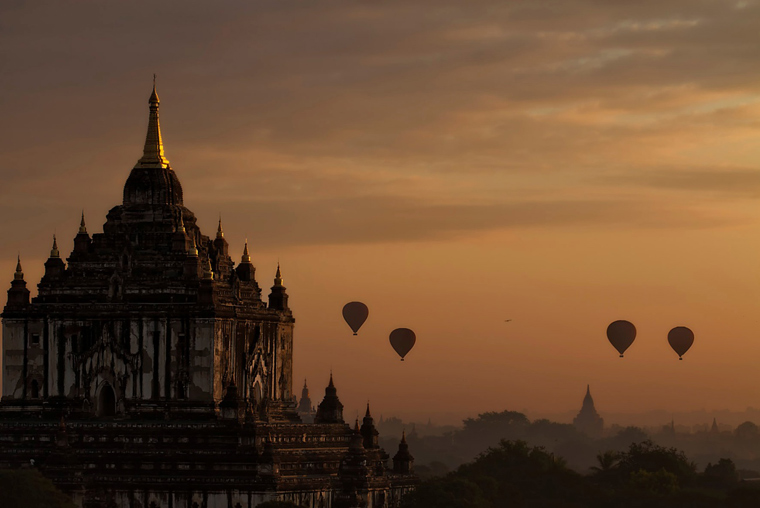 I try to create pictures that compel the viewer to look beyond the picture.
I try to create pictures that compel the viewer to look beyond the picture.
• What message do you get when you interact with nature? How does this change the way you live your life?
My stories around my photographs are closely associated with the subtleness. For example, we may not see anything special in a rising moon. But in this photo of a rising moon and a tree, shot in the cold Himalayan night at Syalsaur, during the photographing process, I could see a patch of light from the rising moon, illuminating a single large tree on top of the mountain. The tree seemed to be making a statement, “look towards me, it’s my night”.
Moments later, as the moon peeked above the horizon, it all fell in place. The tree seemed to be now saying, “I now realize: how small I am.” In essence, the process of learning also feeds the Ego, which creates a mist around us. It sometimes leads us to believe that we know everything. It’s therefore important to continue to associate with people who are more knowledgeable.
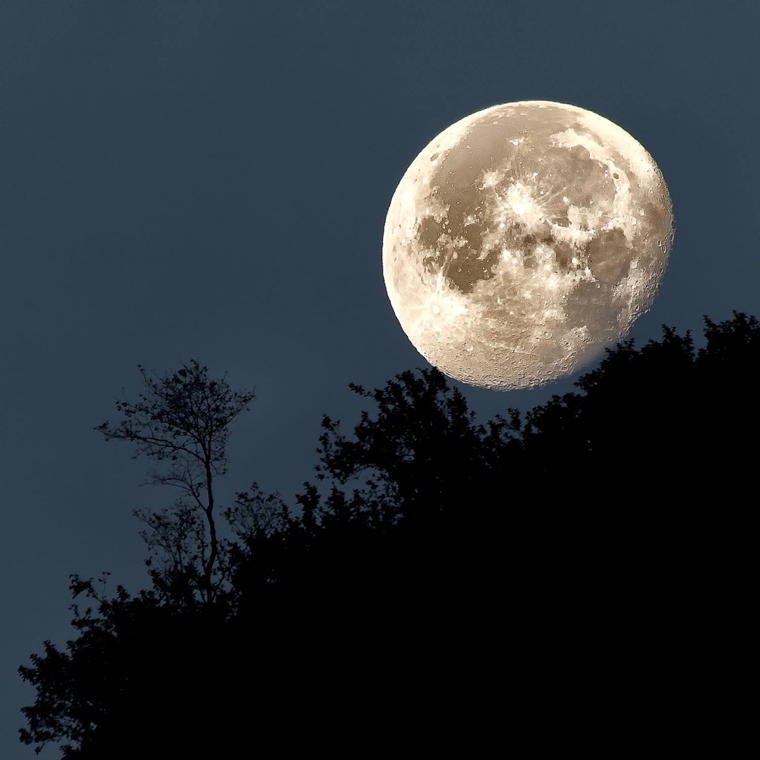 Seeing beyond seeing: While photographing the moon in the cold Himalayan night at Syalsaur
Seeing beyond seeing: While photographing the moon in the cold Himalayan night at Syalsaur
• Photography of nature’s landscapes seems to be your path to connecting with nature and the higher realm. What advice can you share with others so that they may learn to further appreciate such beauty and find their own path to connecting with their inner self?
Journey of life has to be experienced through effort. One can never know what lies ahead, but a step in the right direction, with the right effort will ultimately result in a bloom.
For me life has created a lot of opportunities and an equal share of challenges. The only thing that I have done is that at every stage of a challenge, continue to steer the ship through the storm, learning from the environment and transforming myself to emerge with something new.
At a very young age, a challenge at home sparked my interest towards history to simply divert my mind. This grew into a maniacal pursuit for a better grip on the history of Punjab, North West Frontiers and Kashmir.
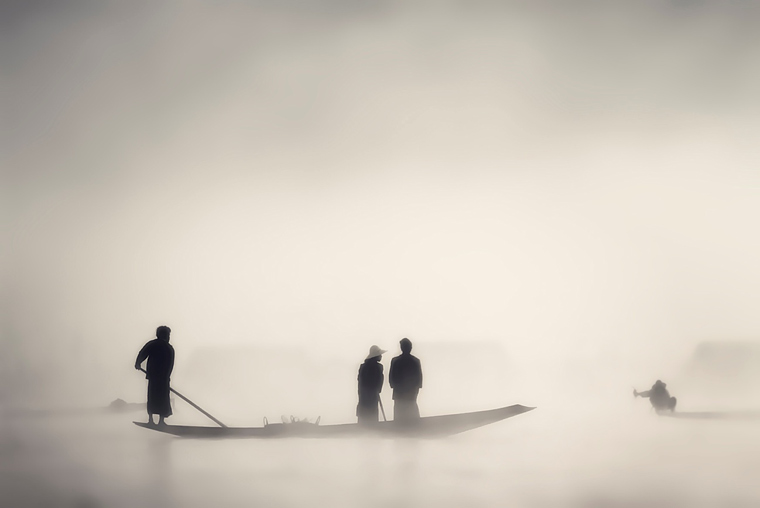 Certainly there is more to everything than what meets the eye.
Certainly there is more to everything than what meets the eye.
At the start of my career, a challenging situation in the work environment turned me to playing Tabla. A lot of effort, resulting in no progress, made me change to Keertan singing. This transformed into another maniacal search of the Raags and the Musical Framework of Guru Granth Sahib.
On being transferred on job to Hong Kong, in 1999, I had to prioritize my earnings for the long term. I chose to stay in the outskirts, without being able to afford a car, travelling by bus to work. An hour of bus ride to office and an hour back, were creating an idle mind, which was diverted by pursuing the study of Gurbani through Sahib Singh’s Darpan translation of Guru Granth Sahib. This monumental 10 volume work was read end to end over a two year period while on the bus. It improved my Gurmukhi and opened a door to spiritual understanding.
From here started my journey towards understanding Eastern Philosophy that opened my mind even further.
I then realized that God’s creation is calling me to experience it through a lens and I naturally moved into photography.
Today I am seeing myself transforming further into an experience based writer. My photographs with stories have featured in magazines like Asian Geographic.
The reason for sharing my journey is to come to the point that every element of my past, in some form or other has had an impact on my photography. It is this factor alone that creates the feeling that there is something more to my pictures than what meets the eye.
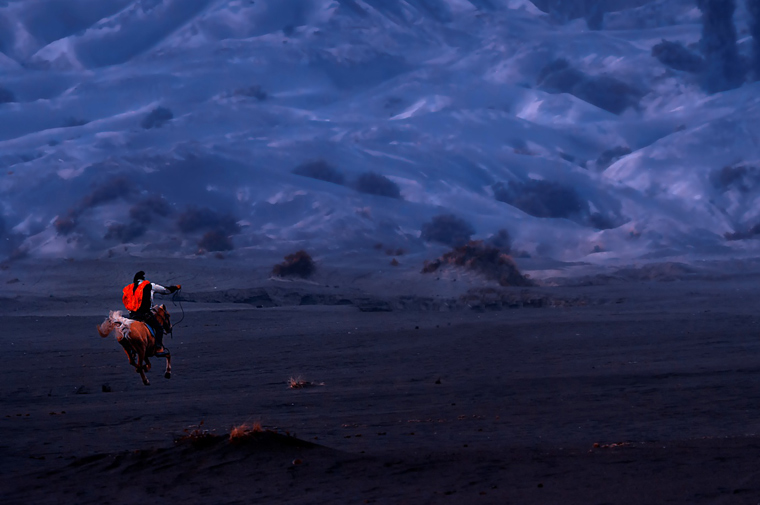 Life requires us to keep galloping and not rest till we have reached our destination.
Life requires us to keep galloping and not rest till we have reached our destination.
I really don’t know what I am in search of but yes I do know that I have a very curious nature and if it gets aroused, I will not rest till I have fully understood everything around it.
My focuses have shifted many times and the only thing that strings them is the consistency of effort and reinvention of me through every challenge presented by life.
Life creates challenges for all of us and my advice is that in good times, focus on things that exist around you and try to understand how you fit with them. When life creates a phase of challenge, then capitalize the learning from the past and turn inwards, increasing your effort in whatever you are best at. Time is not static and you will soon find having reinvented yourself into someone even better.
• You have a respectable career as Vice President with American Express which allows you to travel significantly around the world. What insights or advice would you like to share?
Every job is respectable. It’s all about how we see things.
My advice is to do your current job to the best of your ability. Love what you are doing and you will find the next transformational opportunity will present itself automatically. It’s when you continue to excel in the jobs you are doing, a career starts taking shape.
It’s not the destination but the journey that is important.
Life asks that we experience it through passions and this existence should not be limited to performance of daily chores. I see this creation through a language of pictures. Describing beauty around us in words is like oppressing the truth, visually though, it floats freely. Born in India, living in Singapore, I have been living a life of a wanderer. My wanderings started early at the age of 7, when to flourish my individuality, I was sent to be educated in boarding schools across the valley of Dehradun, in the foothills of Himalayas. I schooled at Welham Boys School till the age of 13 and thereafter at The Doon School. Wonder-struck with machines, I pursued engineering at Manipal Institute of Technology, in South India, which was later supplemented with a MBA from University of Chicago. I am currently based in Singapore with American Express as Head of Merchant Pricing for Japan/Asia-Pacific region, a job that keeps me intellectually challenged. I have lived in Singapore, Hong Kong and India, and travelled significantly across the world. My passions have evolved and changed many times in my life. It’s this aspect of my wandering nature that is best described as…
Amardeep blogs weekly at www.amardeepphotography.com
http://www.sikhfoundation.org/people-events/nature-landscapes-the-photography-of-amardeep-singh/
These images were just too stunning for me to reduce them!

• What inspired you to make your journey to Tibet?
I am a born wanderer. Wanderers don’t need inspirations. They are like white clouds floating freely in the sky, unknowingly abandoning themselves in search for the unknown, which eventually leads them to an aim that has always been present but hidden deep inside them. Tibet was one small outcome of my larger wandering footprint. Our elder daughter had completed schooling in mid 2012 and was on her way to college, which would take her far away from us in Singapore to Vancouver, and the journey to Tibet also served as a father-daughter bonding time.
• Were the Tibetan people welcoming and helpful in your travels?
Treat others as you would expect to be treated. This simple approach will ensure a warm welcome in any place. As we expose ourselves to diverse cultures and inculcate respect for all, not seeing ourselves to be any superior to others, then one’s own diversity can serve as a great anchor, building bridges to cross the world with ease. When you point a finger at others, four on your hand point back to you. So during one’s travels, before forming an opinion about the people in a country, it is always better to reflect on oneself and ask how you should approach them. Be sensitive to their customs and culture. Be open to sharing yours with them. Tibetans are no exception these basic human traits.

• Was language a barrier in communicating with the Tibetan people?
I see the world through frames and over time have learnt the language of pictures, which has taught me to communicate without the need to open one’s mouth. A photographer needs to learn how to communicate with the environment, without having to learn the language.
My photography adventures take me to very remote parts of the world, where even infrastructure may not exist. In situations like these, I focus my mind on the sole objective to create powerful pictures and therefore I reduce my needs to that of mere existence.
So the only language I need to know is that which gets me food.
Tibet however is unique as the Chinese government has imposed a lot of travel restrictions. To enter Tibet, apart from the China Visa, one needs a Tibet autonomous region permit. The permit will allow access only to the places that were applied for and therefore no last minute travel changes can be incorporated. To travel outside of Lhasa, foreigners need to hire a driver and a guide from a designated agency.
I do not look for luxuries in my travels. Photography requires the flexibility to chase the light and therefore the mindset needs to be highly adaptive. In remote western areas of Tibet, I stayed with local families in the villages. That’s the best way to experience any new place.

• Do you have any suggestions for anyone wanting to plan such a trip to Tibet?
I need to qualify this question by saying that if the reference is to plan a trip similar to mine, then you need to be prepared for a rough ride. I drove 3,400 km from Lhasa to ancient Guge kingdom, which is very close to the India border of Spiti valley in Himachal Pradesh. These are remote areas where food and quality of accommodation is bare minimal. If that’s the reference then you need to prepare yourself well for the adventures associated with any long and hard journey.
On the other hand, if one is referring to a typical tourist circuit, then getting to Lhasa and experiencing a few surrounding areas, in a day’s drive, is what could be achieved from the lap of luxury.
My advice is to be first clear in your mind, what you plan to achieve from a travel like this to a remote part of the world.
Additionally, it is very important to be aware that Tibet is called the roof of the world, surely for a reason. You are going to be on a plateau at a very high altitude. Getting into Lhasa, the capital city of Tibet, from the lower altitudes requires a rapid ascend through modern means of transport. The body will call out for acclimatization. Head will pound and blood pressure will start rising. This should not be taken lightly and it is advised to keep a minimum of two days in Lhasa, just lying down on your bed. One should neither be ambitious to walk in the first two days. Once the body has adjusted, the plateau of Tibet will make you feel as you are in any other flat land. High Altitude Mountains in Tibet appear to be very small as you are yourself at a relatively high flat land.

• Your passion for photography and history is awesome. Your photography is breathtaking. Certainly there is much more to a picture than what meets the eye. Your phrase "I try to see the world beyond seeing!" Would you please elaborate on this and explain the realm of "seeing" you refer to?
Passions are not born. They are a rare commodity. Anything rare has to be found with an effort. What may seem to be awesome now has been achieved by years of burning the midnight oil. A small step at a time, with persistence over the years, has created what I am today.
It is through ages of being hidden deep inside the earth, enduring pressure from all direction that coal finally transforms to a diamond. Certainly there is more to a diamond than what meets the eye.
To be able to see anything, firstly there has to be a conviction that it does exist. It is only then can we channel our effort to see it. Even by seeing, we may still not be able to see it because it may require a transformation of our self to see the subtleness around it.
Our individuality is connected to our environment and every action we make, is bound to result in a response from the environment. It is this element that I refer to as having the ability to “see beyond seeing”.

• What message do you get when you interact with nature? How does this change the way you live your life?
My stories around my photographs are closely associated with the subtleness. For example, we may not see anything special in a rising moon. But in this photo of a rising moon and a tree, shot in the cold Himalayan night at Syalsaur, during the photographing process, I could see a patch of light from the rising moon, illuminating a single large tree on top of the mountain. The tree seemed to be making a statement, “look towards me, it’s my night”.
Moments later, as the moon peeked above the horizon, it all fell in place. The tree seemed to be now saying, “I now realize: how small I am.” In essence, the process of learning also feeds the Ego, which creates a mist around us. It sometimes leads us to believe that we know everything. It’s therefore important to continue to associate with people who are more knowledgeable.

• Photography of nature’s landscapes seems to be your path to connecting with nature and the higher realm. What advice can you share with others so that they may learn to further appreciate such beauty and find their own path to connecting with their inner self?
Journey of life has to be experienced through effort. One can never know what lies ahead, but a step in the right direction, with the right effort will ultimately result in a bloom.
For me life has created a lot of opportunities and an equal share of challenges. The only thing that I have done is that at every stage of a challenge, continue to steer the ship through the storm, learning from the environment and transforming myself to emerge with something new.
At a very young age, a challenge at home sparked my interest towards history to simply divert my mind. This grew into a maniacal pursuit for a better grip on the history of Punjab, North West Frontiers and Kashmir.

At the start of my career, a challenging situation in the work environment turned me to playing Tabla. A lot of effort, resulting in no progress, made me change to Keertan singing. This transformed into another maniacal search of the Raags and the Musical Framework of Guru Granth Sahib.
On being transferred on job to Hong Kong, in 1999, I had to prioritize my earnings for the long term. I chose to stay in the outskirts, without being able to afford a car, travelling by bus to work. An hour of bus ride to office and an hour back, were creating an idle mind, which was diverted by pursuing the study of Gurbani through Sahib Singh’s Darpan translation of Guru Granth Sahib. This monumental 10 volume work was read end to end over a two year period while on the bus. It improved my Gurmukhi and opened a door to spiritual understanding.
From here started my journey towards understanding Eastern Philosophy that opened my mind even further.
I then realized that God’s creation is calling me to experience it through a lens and I naturally moved into photography.
Today I am seeing myself transforming further into an experience based writer. My photographs with stories have featured in magazines like Asian Geographic.
The reason for sharing my journey is to come to the point that every element of my past, in some form or other has had an impact on my photography. It is this factor alone that creates the feeling that there is something more to my pictures than what meets the eye.

I really don’t know what I am in search of but yes I do know that I have a very curious nature and if it gets aroused, I will not rest till I have fully understood everything around it.
My focuses have shifted many times and the only thing that strings them is the consistency of effort and reinvention of me through every challenge presented by life.
Life creates challenges for all of us and my advice is that in good times, focus on things that exist around you and try to understand how you fit with them. When life creates a phase of challenge, then capitalize the learning from the past and turn inwards, increasing your effort in whatever you are best at. Time is not static and you will soon find having reinvented yourself into someone even better.
• You have a respectable career as Vice President with American Express which allows you to travel significantly around the world. What insights or advice would you like to share?
Every job is respectable. It’s all about how we see things.
My advice is to do your current job to the best of your ability. Love what you are doing and you will find the next transformational opportunity will present itself automatically. It’s when you continue to excel in the jobs you are doing, a career starts taking shape.
It’s not the destination but the journey that is important.
Life asks that we experience it through passions and this existence should not be limited to performance of daily chores. I see this creation through a language of pictures. Describing beauty around us in words is like oppressing the truth, visually though, it floats freely. Born in India, living in Singapore, I have been living a life of a wanderer. My wanderings started early at the age of 7, when to flourish my individuality, I was sent to be educated in boarding schools across the valley of Dehradun, in the foothills of Himalayas. I schooled at Welham Boys School till the age of 13 and thereafter at The Doon School. Wonder-struck with machines, I pursued engineering at Manipal Institute of Technology, in South India, which was later supplemented with a MBA from University of Chicago. I am currently based in Singapore with American Express as Head of Merchant Pricing for Japan/Asia-Pacific region, a job that keeps me intellectually challenged. I have lived in Singapore, Hong Kong and India, and travelled significantly across the world. My passions have evolved and changed many times in my life. It’s this aspect of my wandering nature that is best described as…
“Just as a white summer cloud, in harmony with heaven and earth freely floats in the blue sky from horizon to horizon following the breath of the atmosphere – in the same way the pilgrim abandons himself to the breath of the greater life that… leads him beyond the farthest horizons to an aim which is already present within him, though yet hidden from his sight.” — Lama Anagarika Govinda.
My life in the corporate world is primarily centered on the left side of the brain and it’s through the lenses that I tap into its creative right side. I try to see the world beyond seeing!
Amardeep blogs weekly at www.amardeepphotography.com
http://www.sikhfoundation.org/people-events/nature-landscapes-the-photography-of-amardeep-singh/
These images were just too stunning for me to reduce them!





